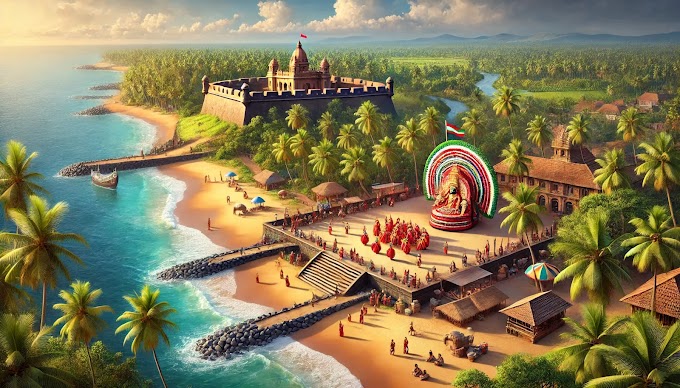 |
| Image Source - Google | Image By Name: Dennis Jarvis from Halifax, Canada Experience the Grandeur of Humayun’s Tomb – History, Timings, and Best Time to Visit |
Introduction to Humayun’s Tomb, Delhi
Located in the heart of New Delhi, Humayun’s Tomb is a historical marvel that stands as one of the finest examples of Mughal architecture in India. Built-in 1572, this iconic structure was commissioned by Bega Begum, the devoted wife of Mughal Emperor Humayun, and designed by the Persian architect Mirak Mirza Ghiyas. The tomb not only serves as a testament to Mughal art and architecture but also inspired the creation of the world-famous Taj Mahal in Agra. Recognized as the first garden tomb in the Indian subcontinent, Humayun’s Tomb is a blend of Persian and Indian design elements. In 1993, it was declared a UNESCO World Heritage Site, solidifying its status as one of India’s most visited and admired tourist destinations. |
History of Humayun’s Tomb
Following Emperor Humayun’s death in 1556, his wife, Bega Begum, undertook the monumental task of building a tomb that would honor her husband’s legacy. Construction started in 1565 and was completed by 1572, with an estimated cost of 1.5 million rupees, a considerable amount for that time. a substantial sum for that era. Humayun's Tomb was designed not only as a mausoleum for the emperor but also as a resting place for other Mughal rulers and royal family members. The tomb complex includes a 30-acre Charbagh (Four Gardens), divided by water channels and pathways that reflect the Islamic concept of paradise. Its construction from red sandstone and white marble introduced an architectural style that would later inspire other iconic monuments, such as the Taj Mahal. The tomb’s octagonal shape and double-dome design are quintessential elements of Mughal architecture, housing the graves of Humayun, his wives, and several Mughal emperors. The entire complex stands as a testament to the artistic and cultural accomplishments of the Mughal Empire during its peak. |
Architectural Brilliance of Humayun’s Tomb
Humayun’s Tomb exemplifies early Mughal architecture, blending Persian, Indian, and Islamic design influences. Situated on a raised platform, the tomb features an octagonal chamber crowned by a white marble double dome. The surrounding Charbagh garden, which is the first of its kind in India, enhances the tomb's grandeur, with pathways and water channels that create a serene and balanced environment. The complex also includes several other historical monuments:
These monuments enrich the complex and offer additional insights into the artistic achievements of the Mughal era. |
Why You Should Visit Humayun’s Tomb
A visit to Humayun’s Tomb is more than just a sightseeing experience; it’s an immersion into the glorious past of the Mughal dynasty. The tomb’s tranquil atmosphere, coupled with its rich historical and architectural significance, makes it a must-visit for history enthusiasts, architecture lovers, and travelers alike.
The best times to visit are during sunrise or sunset when the red sandstone takes on a beautiful hue, making it a photographer’s paradise. |
Best Time to Visit Humayun’s Tomb
Although Humayun’s Tomb is open throughout the year, the ideal time to visit is from October to March, when Delhi enjoys cooler weather. Visiting during these months allows you to comfortably explore the complex and enjoy the lush gardens without the intense heat of summer. To enhance your experience, consider visiting in the early morning or late afternoon to avoid crowds and enjoy the tranquil ambiance of the gardens. |
Visiting Timings and Entry Fees
The fees and timings make it easy for visitors to plan their visit and take full advantage of the complex’s historical and architectural offerings. |
How to Reach Humayun’s Tomb
Humayun’s Tomb is easily accessible from various parts of Delhi:
With its central location, Humayun’s Tomb is a convenient destination for both local visitors and tourists. |
Nearby Attractions
When visiting Humayun’s Tomb, consider exploring these nearby attractions for a full cultural experience:
These nearby sites make it easy to extend your visit into a full day of cultural exploration. |
Conclusion
Humayun’s Tomb is more than just a historical monument; it’s an architectural gem that encapsulates the grandeur of the Mughal era. With its breathtaking design, historical significance, and tranquil setting, the tomb provides an enriching experience for anyone visiting Delhi. Whether you’re exploring the intricacies of Mughal architecture or simply enjoying a peaceful walk in the lush gardens, Humayun’s Tomb offers a memorable glimpse into India’s rich heritage. Plan your visit today and witness the timeless beauty of this UNESCO World Heritage Site, a true testament to India’s architectural and cultural legacy. Read more about popular tourist places in India |






